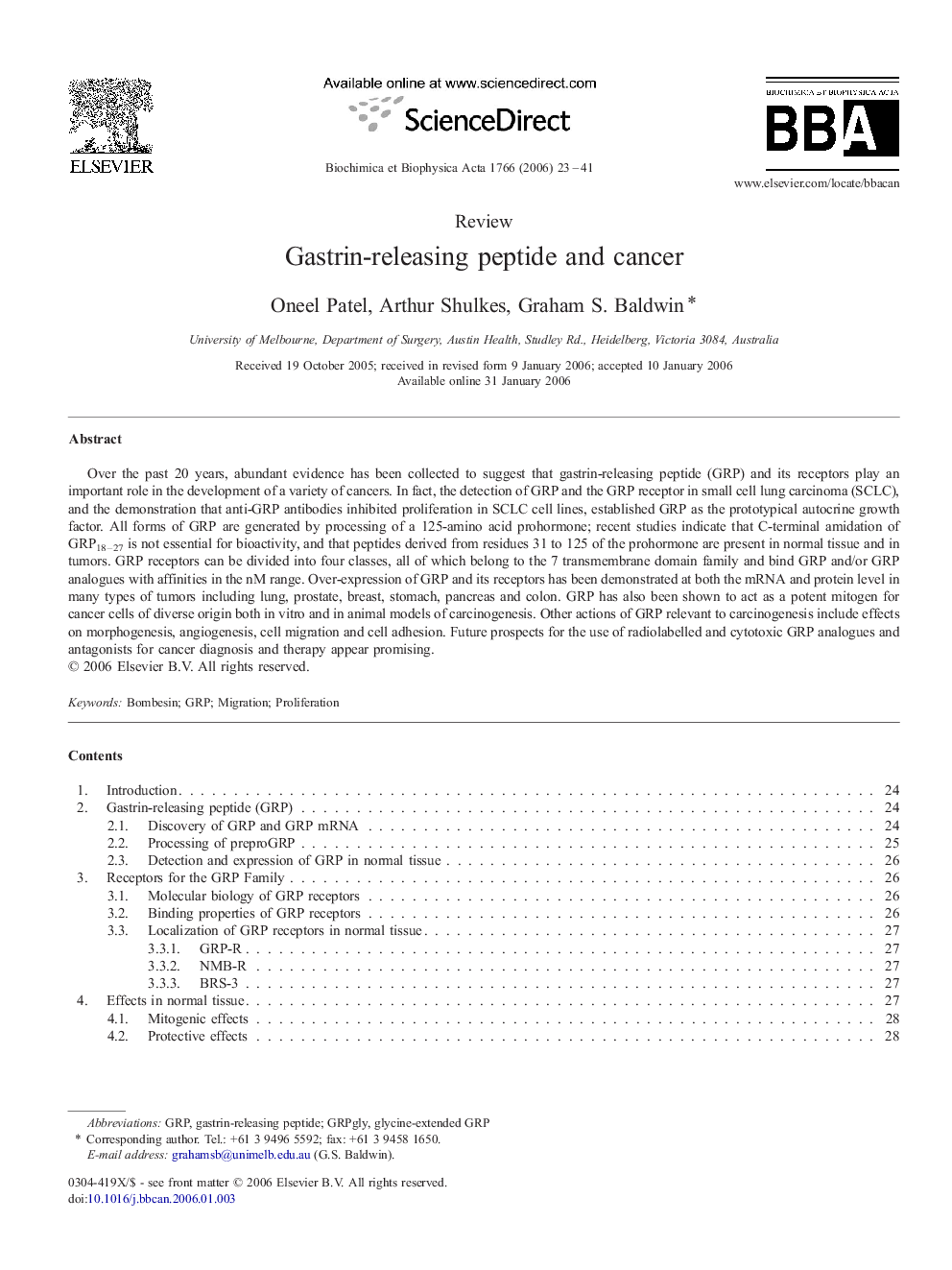| کد مقاله | کد نشریه | سال انتشار | مقاله انگلیسی | نسخه تمام متن |
|---|---|---|---|---|
| 2101233 | 1083118 | 2006 | 19 صفحه PDF | دانلود رایگان |

Over the past 20 years, abundant evidence has been collected to suggest that gastrin-releasing peptide (GRP) and its receptors play an important role in the development of a variety of cancers. In fact, the detection of GRP and the GRP receptor in small cell lung carcinoma (SCLC), and the demonstration that anti-GRP antibodies inhibited proliferation in SCLC cell lines, established GRP as the prototypical autocrine growth factor. All forms of GRP are generated by processing of a 125-amino acid prohormone; recent studies indicate that C-terminal amidation of GRP18–27 is not essential for bioactivity, and that peptides derived from residues 31 to 125 of the prohormone are present in normal tissue and in tumors. GRP receptors can be divided into four classes, all of which belong to the 7 transmembrane domain family and bind GRP and/or GRP analogues with affinities in the nM range. Over-expression of GRP and its receptors has been demonstrated at both the mRNA and protein level in many types of tumors including lung, prostate, breast, stomach, pancreas and colon. GRP has also been shown to act as a potent mitogen for cancer cells of diverse origin both in vitro and in animal models of carcinogenesis. Other actions of GRP relevant to carcinogenesis include effects on morphogenesis, angiogenesis, cell migration and cell adhesion. Future prospects for the use of radiolabelled and cytotoxic GRP analogues and antagonists for cancer diagnosis and therapy appear promising.
Journal: Biochimica et Biophysica Acta (BBA) - Reviews on Cancer - Volume 1766, Issue 1, August 2006, Pages 23–41